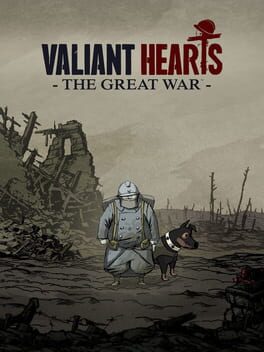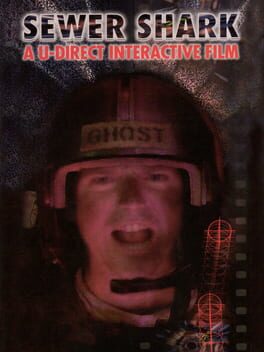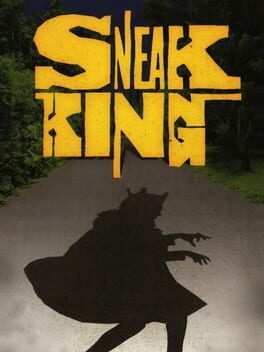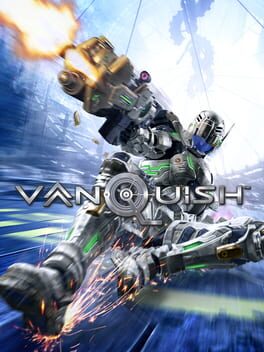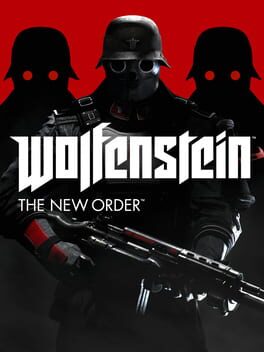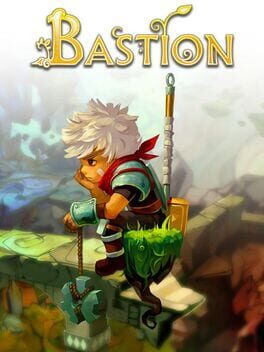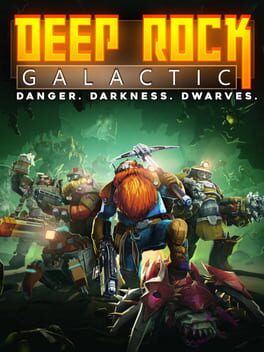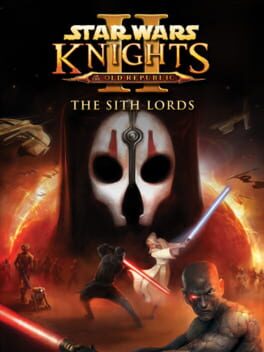Phiro
25 Reviews liked by Phiro
YePP, the inventors of VideoGames have done it Yet Again!! Ace Combat 6 is mostcertainly The best game of the past eight months, move Aside pizzaTower. My Build of choice? Well I of course colored my gundam black&orange (cheeseD every boss with that setup believ it or not). And yes, the O-S-T is full of "absolute bangers that slap" As The Kids Say, when this fucking incredible track started blaring during that one arena fight (you know the one) I was like OYEaa we're GaminG now. OVerall this sequel to Sekiro is everything I couldve hoped for and more, thankyou Hideki Kamiya!!!
A game about war and not a war game. Soulcrushing and informative at the same time. It speaks to the heart and packs a great message.
Set during WW I, the game blends personal struggles of its characters with larger historical details and political realities of the devastating conflict. It takes a few small missteps on immersion and gameplay hiccups, but the game successfully tackles grim truths in a story with relatable characters, fabulous art, and balanced moments of happiness and despair, making its tale about how war destroys lives accessible and appealing to players of all ages while acknowledging war's human cost.
Set during WW I, the game blends personal struggles of its characters with larger historical details and political realities of the devastating conflict. It takes a few small missteps on immersion and gameplay hiccups, but the game successfully tackles grim truths in a story with relatable characters, fabulous art, and balanced moments of happiness and despair, making its tale about how war destroys lives accessible and appealing to players of all ages while acknowledging war's human cost.
Sewer Shark
1992
Sneak King
2006
Vanquish
2010
This game is pretty much everything I love and hate about platinum games. The premise and gameplay are super cool, but the story has much to be desired, and the constant plague of 'platinum-isms' permeate throughout the entire game. Stuff like, terrible gimmick sections, instant kill scenarios, forced walk and talk sections, etc.
Metroid Fusion
2002
I think this might be the game on which my opinion changed the most after a replay. Oddly, this is my first time actually finishing Metroid Fusion - many years ago I almost did, but I got stuck on the final boss and gave up. Nowadays, since I value combat and minute-to-minute level design more than I used to, I actually appreciate this game a whole lot more. It’s still deeply flawed, and a lot of its strongest elements only really work on a blind first playthrough, but it’s a largely enjoyable experience that does some things pretty well.
Fusion’s biggest missed opportunity is how many of its best moments are deflated once you know what’s going on under the hood. The SA-X sequences, which are brilliantly presented in terms of visuals and audio and create tons of tension, lose almost all of that tension once you realize how heavily scripted they are. You’re almost never in any actual danger until the very last one, which is mostly just kind of an annoying but easy chase sequence. Making the AI more competent and allowing it to track you throughout the station would make the enemy much more intimidating, but as it stands these moments don’t really work for me anymore.
The game’s first major weakness, which in some ways could be argued to also be a strength, is how linear it is. On the one hand, there is virtually no routing or large-scale exploration to speak of. On the other hand, the linearity allows for a much tighter and more story-driven experience, with a very consistent difficulty curve, and which plays with the concept of player agency in some interesting ways narratively later on. I won’t go into detail on those moments both because I think they’re best experienced blind and because I don’t feel qualified to adequately discuss them, but I enjoyed them, even if their addition doesn’t make up for the lack of interesting world design for me personally.
My other largest complaint with this game is the simplicity of its movement and traversal mechanics. These have been simplified in order to prevent sequence breaking, but I dispute the necessity of this. The controls here aren’t bad, they’re fairly responsive and fluid, but there’s not much meat on the bones; all of the interesting tech from Super Metroid has been removed, and some things have been pointlessly neutered. Wall jumps exist, but single wall jumps are not possible. Morph ball is here, but not mockball. Morph Ball bombs exist, but cannot be bounced off of midair, and take nearly twice as long to explode as they do in Super for no apparent reason. Fortunately, the Speed Booster and Shinespark are still here, but their usage is limited for traversal, and they’re primarily used for mini-challenges to acquire an upgrade.
I have a few other minor complaints scattered here and there. There’s a lot of unskippable dialogue in this game that wastes your time. Power Bombs trivialize a lot of segments after their introduction, and are fairly abundant if you pick up a few expansions. There are a few really sucky boss fights where it feels impossible to reliably avoid damage, or where the strategy to kill them safely is really boring and repetitive, and unfortunately the final boss is among these. Occasionally, the correct means of progression feels needlessly obfuscated and illogical, usually requiring you to place bombs in places that feel entirely arbitrary. These complaints are minor, but they add up to a greater sense of dissatisfaction with the game.
Despite all my complaints, I actually still like this game quite a bit. The biggest reason why is that even though some of the bosses aren’t great, a number of them are actually pretty solid, and combat with regular enemies is maybe the strongest it’s ever been in the series. The Nightmare fight is among the best in any Metroid game, the fights with Arachnus, Nettori, B.O.X. 1, and Neo Ridley are pretty fun, and Zazabi, Yakuza, and Barrier Core X are inoffensive. It’s Serris, the second encounter with the B.O.X., and the final confrontation with the SA-X that I have real problems with, and those are a minority of the fights in the game.
Normal enemies are often pretty interesting; they’re mostly reasonably avoidable and often don’t give you a safe place to shoot them from to trivialize them. I like that this game is relatively stingy with health and ammo drops, as it puts more stress on your ability to avoid damage and conserve resources. It’s unfortunate that the door before each boss gives you basically a full restore, but this largely works well for individual levels.
Speaking of individual levels, Fusion’s are actually pretty good! The world design might be underwhelming, but Fusion largely nails the levels themselves. They’re reasonably complex in terms of layout, and require some pretty thorough exploration to progress and find upgrades. It’s nice that you’re not always told where on the map your objective is, and are frequently required to visit areas that are not on the initial map, forcing you to explore in spite of the linear, guided nature of the game.
One underappreciated aspect of Metroid Fusion’s gameplay is the replacement of the series’ traditional energy and missile pickups with X parasites, which require you to collect them quickly so as to avoid them reforming into new enemies, have erratic flight patterns that are tricky to predict, and sometimes can only be collected after they’re reformed into new enemies once or twice. These can lead to some surprisingly dynamic enemy patterns within levels.
The atmosphere around the station is also really solid. For a GBA game, Fusion’s presentation is extraordinarily strong - the music and visuals are surprisingly effective at creating the tone of horror and suspense, even when the mechanics somewhat fail to follow through on that tone. There are moments with an eerie, clinical computer voice making announcements through low-fidelity audio, and it’s actually very effective and unsettling. There are moments where a boss that’s to be encountered later flies past in the background, and the game doesn’t acknowledge it at all, which did a really good job of putting me on edge. Moments like this sell the game’s horror much better than the SA-X encounters or really any of the actual combat encounters ever did.
I certainly have my complaints with Metroid Fusion; it doesn’t quite live up to Super’s strengths, and mechanically it’s been surpassed by several later games, but it remains a one-of-a-kind Metroid game. Nothing has really tried to replicate its exact brand of creepiness, and it has among the overall strongest combat in the series, which is worth a lot. It’s a shame it couldn’t quite follow through on some of its best ideas, and it has quite a few irritations that I’d rather not deal with, but overall I still really enjoyed this game, and I’m glad to have finally gone back and finished it after all these years.
Fusion’s biggest missed opportunity is how many of its best moments are deflated once you know what’s going on under the hood. The SA-X sequences, which are brilliantly presented in terms of visuals and audio and create tons of tension, lose almost all of that tension once you realize how heavily scripted they are. You’re almost never in any actual danger until the very last one, which is mostly just kind of an annoying but easy chase sequence. Making the AI more competent and allowing it to track you throughout the station would make the enemy much more intimidating, but as it stands these moments don’t really work for me anymore.
The game’s first major weakness, which in some ways could be argued to also be a strength, is how linear it is. On the one hand, there is virtually no routing or large-scale exploration to speak of. On the other hand, the linearity allows for a much tighter and more story-driven experience, with a very consistent difficulty curve, and which plays with the concept of player agency in some interesting ways narratively later on. I won’t go into detail on those moments both because I think they’re best experienced blind and because I don’t feel qualified to adequately discuss them, but I enjoyed them, even if their addition doesn’t make up for the lack of interesting world design for me personally.
My other largest complaint with this game is the simplicity of its movement and traversal mechanics. These have been simplified in order to prevent sequence breaking, but I dispute the necessity of this. The controls here aren’t bad, they’re fairly responsive and fluid, but there’s not much meat on the bones; all of the interesting tech from Super Metroid has been removed, and some things have been pointlessly neutered. Wall jumps exist, but single wall jumps are not possible. Morph ball is here, but not mockball. Morph Ball bombs exist, but cannot be bounced off of midair, and take nearly twice as long to explode as they do in Super for no apparent reason. Fortunately, the Speed Booster and Shinespark are still here, but their usage is limited for traversal, and they’re primarily used for mini-challenges to acquire an upgrade.
I have a few other minor complaints scattered here and there. There’s a lot of unskippable dialogue in this game that wastes your time. Power Bombs trivialize a lot of segments after their introduction, and are fairly abundant if you pick up a few expansions. There are a few really sucky boss fights where it feels impossible to reliably avoid damage, or where the strategy to kill them safely is really boring and repetitive, and unfortunately the final boss is among these. Occasionally, the correct means of progression feels needlessly obfuscated and illogical, usually requiring you to place bombs in places that feel entirely arbitrary. These complaints are minor, but they add up to a greater sense of dissatisfaction with the game.
Despite all my complaints, I actually still like this game quite a bit. The biggest reason why is that even though some of the bosses aren’t great, a number of them are actually pretty solid, and combat with regular enemies is maybe the strongest it’s ever been in the series. The Nightmare fight is among the best in any Metroid game, the fights with Arachnus, Nettori, B.O.X. 1, and Neo Ridley are pretty fun, and Zazabi, Yakuza, and Barrier Core X are inoffensive. It’s Serris, the second encounter with the B.O.X., and the final confrontation with the SA-X that I have real problems with, and those are a minority of the fights in the game.
Normal enemies are often pretty interesting; they’re mostly reasonably avoidable and often don’t give you a safe place to shoot them from to trivialize them. I like that this game is relatively stingy with health and ammo drops, as it puts more stress on your ability to avoid damage and conserve resources. It’s unfortunate that the door before each boss gives you basically a full restore, but this largely works well for individual levels.
Speaking of individual levels, Fusion’s are actually pretty good! The world design might be underwhelming, but Fusion largely nails the levels themselves. They’re reasonably complex in terms of layout, and require some pretty thorough exploration to progress and find upgrades. It’s nice that you’re not always told where on the map your objective is, and are frequently required to visit areas that are not on the initial map, forcing you to explore in spite of the linear, guided nature of the game.
One underappreciated aspect of Metroid Fusion’s gameplay is the replacement of the series’ traditional energy and missile pickups with X parasites, which require you to collect them quickly so as to avoid them reforming into new enemies, have erratic flight patterns that are tricky to predict, and sometimes can only be collected after they’re reformed into new enemies once or twice. These can lead to some surprisingly dynamic enemy patterns within levels.
The atmosphere around the station is also really solid. For a GBA game, Fusion’s presentation is extraordinarily strong - the music and visuals are surprisingly effective at creating the tone of horror and suspense, even when the mechanics somewhat fail to follow through on that tone. There are moments with an eerie, clinical computer voice making announcements through low-fidelity audio, and it’s actually very effective and unsettling. There are moments where a boss that’s to be encountered later flies past in the background, and the game doesn’t acknowledge it at all, which did a really good job of putting me on edge. Moments like this sell the game’s horror much better than the SA-X encounters or really any of the actual combat encounters ever did.
I certainly have my complaints with Metroid Fusion; it doesn’t quite live up to Super’s strengths, and mechanically it’s been surpassed by several later games, but it remains a one-of-a-kind Metroid game. Nothing has really tried to replicate its exact brand of creepiness, and it has among the overall strongest combat in the series, which is worth a lot. It’s a shame it couldn’t quite follow through on some of its best ideas, and it has quite a few irritations that I’d rather not deal with, but overall I still really enjoyed this game, and I’m glad to have finally gone back and finished it after all these years.
In few words. It is an entertaining experience held back by its technical aspects.
The story is not very interesting at first as you'd expect from a trilogy, however it is getting carried by the setting. Gameplay is satisfying on certain times but the loop gets old from time to time especially with forced stealth, AI is pretty exploitable with a repetitive level design and some puzzles are just a stretch rather than a challenge.
As a side note I don't know if it's a bug on the PC version but the soundtrack was missing most of the time, but when it worked it worked marvelously as expected from Mick Gordon, "Ransacked" is a standout just to name one.
Updated on 2/10/22 to add a note on the story, stealth, AI, level design and soundtrack.
The story is not very interesting at first as you'd expect from a trilogy, however it is getting carried by the setting. Gameplay is satisfying on certain times but the loop gets old from time to time especially with forced stealth, AI is pretty exploitable with a repetitive level design and some puzzles are just a stretch rather than a challenge.
As a side note I don't know if it's a bug on the PC version but the soundtrack was missing most of the time, but when it worked it worked marvelously as expected from Mick Gordon, "Ransacked" is a standout just to name one.
Updated on 2/10/22 to add a note on the story, stealth, AI, level design and soundtrack.
Hylics
2015
The most striking factor about Hylics is certainly its unique identity. It is surprising what has been achieved in visual and sound levels and it amazes me that it is an RPG Maker game. The presentation of the game is jaw-dropping, not only in the visuals of the world and its track, but also in the combat animations. There is nothing to be contradicted in this segment - an audiovisual experience is where the game shines and if it is the aesthetic aspect, what matters most will have a full plate.
It is still necessary to emphasize that there is a negative point in this part: there is no clarity of distinction in the visual part. There is doubt to identify which elements should belong to those who are not, or which characters are enemies and which will defeat you with a touch.
There is a distinct lack of direction and balance in its gameplay. An example from my experience came in the first battle when Wayne alone was forced to fight four enemies with abilities that conjure blind (which disables Wayne due to the lack of skills and will go on at this point) still buffets the attack of all members with a unique ability and - not enough - they attack first. The way to get through this challenge was to ignore all the changes and reach the second member of the group, recruit him and only then win the first battle. However, there was no indication to guide this action.
Character characterizations are practically nil in terms of narrative and gameplay. Just the look says something (and look there). None of the members were distinguished and their differentiation in terms of gameplay is expressed through the equipment and the order that the player recruits them. There is nothing else that differentiates them to significant levels, giving rise to a narrow decision window that leaves the combat in the shallowest aspect imaginable.
There are skills and items that break and trivialize the fighting even more. The clearest example would be one of the spells achieved in Endgame through the collection of 3 tokens (which are by no means hidden or difficult enough, which makes me think that this skill has been planned as an easily accessible resource). This skill consists of delivering 3 very strong blows to random enemies. The problem is that this skill is taught to all members of your party at once, making any conflict in the endgame a joke.
And then there is another design problem against Hylics: All characters learn the same skill as long as you have recruited them for the party at that time. In addition to reducing the individuality of the characters, this decision implies backtracking players who - without knowing what awaits them - may wish to take precautions and revisit previous TVs.
The progression closely related to the character's death seems like an interesting balancing device at first glance. However, in my experience I found myself looking for death in banal ways to gain access to life upgrades and skills that were already accumulating in my inventory. Perhaps this scenario justifies the large number of enemies that eliminate the player with the simple touch, something that is certainly irritating but that I have acquired some usefulness here (in addition to being well positioned next to crystals). This whole problem could be avoided by giving the player the option to teleport to reach the upgrades Hall and create a more satisfying gameplay loop. However, it is not done and the crystals lack information that could make the game more accessible. Simple additions such as showing the name of the place where you will teleport to would be welcome and would avoid the need to decorate where each color will direct you (and if you miss the teleport, good luck. I imagine you will have to kill yourself.).
Furthermore, dying by itself is an overly obnoxious experience. If you fail in this game you will not only need to watch a death animation, but two that add up to a total of almost 10 seconds of waiting and cannot be skipped. Not enough, every time you die you will need to select the crystal with the corresponding color and then enter the teleport. It is a more time-consuming and complex process than necessary. The first animation of death was enough on its own (the second is even redundant in spite of being beautiful) and the teleportation problem would be solved if it memorized its last destination. In sections filled with monsters that eliminate the player by touch this becomes quite unpleasant.
Another factor that can induce more deaths and frustrations than necessary is the way the game opens in its second half. The freedom promoted is excessive due to the lack of information given to the player, generating yet another scenario of trial and error that will help to prolong the gameplay in those who refuse to use any walkthrough.
NPCs are overly random and did not give me information that was meaningful enough for me to care about anything in this game. The narrative for gameplay is interesting in some parts for its eccentricity but the great nonsense prevalence in doses that damage the final experience. Nothing against its use, in smaller doses would certainly enrich it, but the way it was used brought me the opposite effect.
Fortunately, it is a short and relatively concise game that does not have enough content to trap the player in his shortcomings for more than a few hours.
It is still necessary to emphasize that there is a negative point in this part: there is no clarity of distinction in the visual part. There is doubt to identify which elements should belong to those who are not, or which characters are enemies and which will defeat you with a touch.
There is a distinct lack of direction and balance in its gameplay. An example from my experience came in the first battle when Wayne alone was forced to fight four enemies with abilities that conjure blind (which disables Wayne due to the lack of skills and will go on at this point) still buffets the attack of all members with a unique ability and - not enough - they attack first. The way to get through this challenge was to ignore all the changes and reach the second member of the group, recruit him and only then win the first battle. However, there was no indication to guide this action.
Character characterizations are practically nil in terms of narrative and gameplay. Just the look says something (and look there). None of the members were distinguished and their differentiation in terms of gameplay is expressed through the equipment and the order that the player recruits them. There is nothing else that differentiates them to significant levels, giving rise to a narrow decision window that leaves the combat in the shallowest aspect imaginable.
There are skills and items that break and trivialize the fighting even more. The clearest example would be one of the spells achieved in Endgame through the collection of 3 tokens (which are by no means hidden or difficult enough, which makes me think that this skill has been planned as an easily accessible resource). This skill consists of delivering 3 very strong blows to random enemies. The problem is that this skill is taught to all members of your party at once, making any conflict in the endgame a joke.
And then there is another design problem against Hylics: All characters learn the same skill as long as you have recruited them for the party at that time. In addition to reducing the individuality of the characters, this decision implies backtracking players who - without knowing what awaits them - may wish to take precautions and revisit previous TVs.
The progression closely related to the character's death seems like an interesting balancing device at first glance. However, in my experience I found myself looking for death in banal ways to gain access to life upgrades and skills that were already accumulating in my inventory. Perhaps this scenario justifies the large number of enemies that eliminate the player with the simple touch, something that is certainly irritating but that I have acquired some usefulness here (in addition to being well positioned next to crystals). This whole problem could be avoided by giving the player the option to teleport to reach the upgrades Hall and create a more satisfying gameplay loop. However, it is not done and the crystals lack information that could make the game more accessible. Simple additions such as showing the name of the place where you will teleport to would be welcome and would avoid the need to decorate where each color will direct you (and if you miss the teleport, good luck. I imagine you will have to kill yourself.).
Furthermore, dying by itself is an overly obnoxious experience. If you fail in this game you will not only need to watch a death animation, but two that add up to a total of almost 10 seconds of waiting and cannot be skipped. Not enough, every time you die you will need to select the crystal with the corresponding color and then enter the teleport. It is a more time-consuming and complex process than necessary. The first animation of death was enough on its own (the second is even redundant in spite of being beautiful) and the teleportation problem would be solved if it memorized its last destination. In sections filled with monsters that eliminate the player by touch this becomes quite unpleasant.
Another factor that can induce more deaths and frustrations than necessary is the way the game opens in its second half. The freedom promoted is excessive due to the lack of information given to the player, generating yet another scenario of trial and error that will help to prolong the gameplay in those who refuse to use any walkthrough.
NPCs are overly random and did not give me information that was meaningful enough for me to care about anything in this game. The narrative for gameplay is interesting in some parts for its eccentricity but the great nonsense prevalence in doses that damage the final experience. Nothing against its use, in smaller doses would certainly enrich it, but the way it was used brought me the opposite effect.
Fortunately, it is a short and relatively concise game that does not have enough content to trap the player in his shortcomings for more than a few hours.
Xenogears
1998
Flawed or not, the only thing I could consider Xenogears as would be a masterpiece. Words simply cannot express how immensely deep this game goes as it may very well be the pinnacle of video game depth and lore.
I could go on forever about the MANY reasons why I think this game succeeds so greatly in various ways, but to put it bluntly I truly believe that Xenogears is the most intellectually and brilliantly written story of any video game (or form of media) I have ever experienced. The battle systems are flashy, satisfying, and fun, the music is nostalgic and beautiful (Afterall it was composed by Yasunori Mitsuda), the art direction is beyond impressive for a PS1 title (albeit sometimes the camera can be pretty jank in certain areas); but what really carries this game is it's unmatched narrative paired with not only some great protagonists, but arguably the best handled cast of villians in gaming.
With what the development team had going for the game in terms of an incredibly tight budget, a team composed almost entirely of amateur programmers, a single man working on 99% of the game's English translation (Richard Honeywood is the fucking GOAT), and a 2 year time limit to release the game, Xenogears turned out to be absolutely phenomenal in my eyes, flaws and all. Easily one of the best and most unforgettable experiences I will ever have playing not just a JRPG, but a video game in general.
I could go on forever about the MANY reasons why I think this game succeeds so greatly in various ways, but to put it bluntly I truly believe that Xenogears is the most intellectually and brilliantly written story of any video game (or form of media) I have ever experienced. The battle systems are flashy, satisfying, and fun, the music is nostalgic and beautiful (Afterall it was composed by Yasunori Mitsuda), the art direction is beyond impressive for a PS1 title (albeit sometimes the camera can be pretty jank in certain areas); but what really carries this game is it's unmatched narrative paired with not only some great protagonists, but arguably the best handled cast of villians in gaming.
With what the development team had going for the game in terms of an incredibly tight budget, a team composed almost entirely of amateur programmers, a single man working on 99% of the game's English translation (Richard Honeywood is the fucking GOAT), and a 2 year time limit to release the game, Xenogears turned out to be absolutely phenomenal in my eyes, flaws and all. Easily one of the best and most unforgettable experiences I will ever have playing not just a JRPG, but a video game in general.
Bastion
2011
Bastion is one of the most powerful gods on the indie-gaming pantheon, next to the likes of Braid and Fez. It was part of the first wave of indie titles which brought the concept to the public eye, thanks to its wholly original visual presentation and simple but rewarding third person action gameplay. The problem is that you’re reading a review written in 2019 and not 2011. It’s still a fun and good looking game, but indie development has gotten more ambitious since then, and Bastion’s ideas have been refined in subsequent games. If you haven’t played it yet, I would caution against thinking of it as one of the all-time-great indie titles, but I would still say it’s definitely worth a playthrough.
Bastion
2011
A beautifully immersive action-RPG that doesn't tax the player with long cutscenes, instead offers flexible gamestyle and phenomenal worldbuilding.
Standard RPG games take too long to get things moving and usually are gigantic games that require a lot of time to skirmish through hundreds of cutscenes, side-quests and infinite dialogues (I love those tbh).
But not Bastion. It goes for the kill right off the bat and all the explanations are done while you're fighting. And what a great adventure it was, the hand-drawn environment is simply gorgeous, the music is terrific, enemies are challenging and the 3D platform is neat!
Standard RPG games take too long to get things moving and usually are gigantic games that require a lot of time to skirmish through hundreds of cutscenes, side-quests and infinite dialogues (I love those tbh).
But not Bastion. It goes for the kill right off the bat and all the explanations are done while you're fighting. And what a great adventure it was, the hand-drawn environment is simply gorgeous, the music is terrific, enemies are challenging and the 3D platform is neat!
Deep Rock Galactic
2018
THE GOOD
+ Interactive Lobby with a lot to do (including drinking until you pass out)
+ Utility tools that allow player expression and are as much valuable as damage input
+ Good amount of biomes, but little expression and variety of scenarios and structures thanks to the procedural nature therefore lacking on the worldbuilding departament
+ Levels with different mechanics (oxygen administration, natural hazards, etc.)
+ Developers have been addressing the concerns of the community
+ M.U.L.E. is a fun and very helpful companion
+ Returning to the Drop Pod at the end of matches is always intense and defines who lives or dies
+ Different classes with unique arsenals and abilities that determine the role you'll play
+ Each class has well-defined advantages and disadvantages
+ Good enemy variety with different weaknesses and unique mechanics that can surprise and even guarantee some scares; Many requiring team work to be eliminated thanks to the weak points not being fully exposed.
+ Good atmosphere and a very organic soundtrack that provides the necessary feelings.
+ Low lighting and some claustrophobic / rugged sectors contribute a lot to immersion and highlight the usefulness of each class and once again leads to an appreciation for variety and cooperation / communication.
+ Levels are generated considering information such as the number of players in the game and the type of mission
+ Good difficulty; Every bullet counts thanks to limited arsenal
THE BAD
- Lack of variety in missions. All have similar goals: Collect and survive / kill
- Designs are not very expressive and all characters are defined by the dwarf archetype
- Progression is mostly restricted to numeric upgrades
- Many recycled enemies
- The enemies' AI is questionable and stays on all the time in "kill" mode
- Enemies will focus characters out of combat, allowing allies to revive him without the need to remove antagonistic troops. The lack of urgency and the discouragement of a more planned and cautious approach is a negative factor that breaks the immersion of the game and contradicts the choices intrinsic to its design.
- The lack of tags on top of dwarfs makes it impossible to recognize allies if they choose similar classes making communication frustrating
- The map is not intuitive and does not communicate information properly. Furthermore, it does not allow you to move while using it
THE UGLY
- The map and the lack of some basic Quality of Life aspects
------------------------------------------------------------------------------------------------
CONCLUSION:
Although recently out of early access status, Deep Rock Galactic already promises to address feedback from its community. At the moment it can be faced as a very competent game and, despite being quite derivative, manages to build a solid and charismatic approach within its genre. It's still rough on its edges, but the promise of improvement makes it easily a titan of the genre that is already easy to recommend.
+ Interactive Lobby with a lot to do (including drinking until you pass out)
+ Utility tools that allow player expression and are as much valuable as damage input
+ Good amount of biomes, but little expression and variety of scenarios and structures thanks to the procedural nature therefore lacking on the worldbuilding departament
+ Levels with different mechanics (oxygen administration, natural hazards, etc.)
+ Developers have been addressing the concerns of the community
+ M.U.L.E. is a fun and very helpful companion
+ Returning to the Drop Pod at the end of matches is always intense and defines who lives or dies
+ Different classes with unique arsenals and abilities that determine the role you'll play
+ Each class has well-defined advantages and disadvantages
+ Good enemy variety with different weaknesses and unique mechanics that can surprise and even guarantee some scares; Many requiring team work to be eliminated thanks to the weak points not being fully exposed.
+ Good atmosphere and a very organic soundtrack that provides the necessary feelings.
+ Low lighting and some claustrophobic / rugged sectors contribute a lot to immersion and highlight the usefulness of each class and once again leads to an appreciation for variety and cooperation / communication.
+ Levels are generated considering information such as the number of players in the game and the type of mission
+ Good difficulty; Every bullet counts thanks to limited arsenal
THE BAD
- Lack of variety in missions. All have similar goals: Collect and survive / kill
- Designs are not very expressive and all characters are defined by the dwarf archetype
- Progression is mostly restricted to numeric upgrades
- Many recycled enemies
- The enemies' AI is questionable and stays on all the time in "kill" mode
- Enemies will focus characters out of combat, allowing allies to revive him without the need to remove antagonistic troops. The lack of urgency and the discouragement of a more planned and cautious approach is a negative factor that breaks the immersion of the game and contradicts the choices intrinsic to its design.
- The lack of tags on top of dwarfs makes it impossible to recognize allies if they choose similar classes making communication frustrating
- The map is not intuitive and does not communicate information properly. Furthermore, it does not allow you to move while using it
THE UGLY
- The map and the lack of some basic Quality of Life aspects
------------------------------------------------------------------------------------------------
CONCLUSION:
Although recently out of early access status, Deep Rock Galactic already promises to address feedback from its community. At the moment it can be faced as a very competent game and, despite being quite derivative, manages to build a solid and charismatic approach within its genre. It's still rough on its edges, but the promise of improvement makes it easily a titan of the genre that is already easy to recommend.
Silent Hill
1999
There's something oddly unsettling and fascinating about exploring empty human-made spaces and structures that would otherwise be bustling with life and activity in a normal day-to-day context, which for me is the biggest strength of the Silent Hill series and what made it stand out from the survival horror crowd.
Like walking inside a Giorgio Chirico painting, Silent Hill focuses on the haunting presence that pervails inside these communal gathering spots long after everyone is gone and drenches it with surrealism that brings the horror out of the ordinary and mundane. Despite its deceitful open air exterior, walking the streets of Silent Hill instils the sense of constantly being watched and trapped by something, in part due to its brilliant unwieldy and claustrophobic camera and purposefully limited draw distance.
Team Silent had a firm grasp on how to pace and escalate horror from game one, making that first treck to the school after night falls for the first time, and filling the streets with unseeable monsters, one of the most harrowing dashes for safety ever, slowly ramping the dread back up again with a seamless transition into the Otherworld that barrages your senses with nightmarish colors and sounds. This is the king of horror atmosphere, making good use of sparse and well payed off jump scares, a lesser focus on situational combat struggles in favor of a long grueling descent into the unknown, and a mastery of setting that makes the sudden appearance of a new floor on an elevator one of eeriest things ever.
One of my favorite moments in the whole game is when after what feels like an eternity in hell being assaulted by disturbingly child looking enemies, a church bell rings in the distance and the once black windows are now filled with foggy familiar daylight, as a sense of relief and salvation washes over you. You quickly end up appreciating being chased by pterodactyls and resident evil dogs during the day after the game makes you spend just a few seconds on the Otherworld version of the town, where darkness covers everything, even the grated floor in which you stand on.
Despite what some might want you to believe about the devil cult focus of the plot, Silent Hill is at its heart the story of broken people and the abuse they have suffered. Lisa's famous and outstandingly directed death cutscene represents the whole Silent Hill pathos, and Harry's inability to deal with such distressing plea for help would further be expanded and explored in the sequel. Despite the torment Alessa suffered during her lifetime and her forever distorted view of the world we witness along the game, Harry's love for Cheryl manages to get past the fog of Silent Hill and reach out to her. Was the amusement park a cheerful distant and fleeting happy memory? Was it experienced at Harry's side?
Age has only made Silent Hill better, the low poly aesthetic giving it even more of a dream like feel, and the primitive sound design of Harry's shoes being closer to reality than what we can get nowadays with modern technology. The soundscape created by Yamaoka is still as effective and essential at presenting the Otherworld as a machinery of industrial sounding evil and madness. Despite not having the cohesiveness its sequels would present with their enemy designs, cast of characters and storyline, Team Silent hit a homerun with this first entry, do not let the outdated discourse get in the way of playing this.
PS: For the love of God, change that damn box art.
Like walking inside a Giorgio Chirico painting, Silent Hill focuses on the haunting presence that pervails inside these communal gathering spots long after everyone is gone and drenches it with surrealism that brings the horror out of the ordinary and mundane. Despite its deceitful open air exterior, walking the streets of Silent Hill instils the sense of constantly being watched and trapped by something, in part due to its brilliant unwieldy and claustrophobic camera and purposefully limited draw distance.
Team Silent had a firm grasp on how to pace and escalate horror from game one, making that first treck to the school after night falls for the first time, and filling the streets with unseeable monsters, one of the most harrowing dashes for safety ever, slowly ramping the dread back up again with a seamless transition into the Otherworld that barrages your senses with nightmarish colors and sounds. This is the king of horror atmosphere, making good use of sparse and well payed off jump scares, a lesser focus on situational combat struggles in favor of a long grueling descent into the unknown, and a mastery of setting that makes the sudden appearance of a new floor on an elevator one of eeriest things ever.
One of my favorite moments in the whole game is when after what feels like an eternity in hell being assaulted by disturbingly child looking enemies, a church bell rings in the distance and the once black windows are now filled with foggy familiar daylight, as a sense of relief and salvation washes over you. You quickly end up appreciating being chased by pterodactyls and resident evil dogs during the day after the game makes you spend just a few seconds on the Otherworld version of the town, where darkness covers everything, even the grated floor in which you stand on.
Despite what some might want you to believe about the devil cult focus of the plot, Silent Hill is at its heart the story of broken people and the abuse they have suffered. Lisa's famous and outstandingly directed death cutscene represents the whole Silent Hill pathos, and Harry's inability to deal with such distressing plea for help would further be expanded and explored in the sequel. Despite the torment Alessa suffered during her lifetime and her forever distorted view of the world we witness along the game, Harry's love for Cheryl manages to get past the fog of Silent Hill and reach out to her. Was the amusement park a cheerful distant and fleeting happy memory? Was it experienced at Harry's side?
Age has only made Silent Hill better, the low poly aesthetic giving it even more of a dream like feel, and the primitive sound design of Harry's shoes being closer to reality than what we can get nowadays with modern technology. The soundscape created by Yamaoka is still as effective and essential at presenting the Otherworld as a machinery of industrial sounding evil and madness. Despite not having the cohesiveness its sequels would present with their enemy designs, cast of characters and storyline, Team Silent hit a homerun with this first entry, do not let the outdated discourse get in the way of playing this.
PS: For the love of God, change that damn box art.
Silent Hill
1999
I played Silent Hill 2 first because I heard Silent Hill doesn't really hold up, that 2 is better, and the stories aren't connected anyway. However, my question now is why do people think Silent Hill doesn't hold up. I can understand distaste for 3d graphics as lifelike as origami, but this game accomplished a lot with its limited resources. Its atmosphere still works amazingly well, and the level design is even better than Silent Hill 2's. It's different from its successor, but not necessarily a lesser game. When you play it, you might start by thinking it looks a little rough, but by the end you'll wish more games had such an engrossing world to explore.

